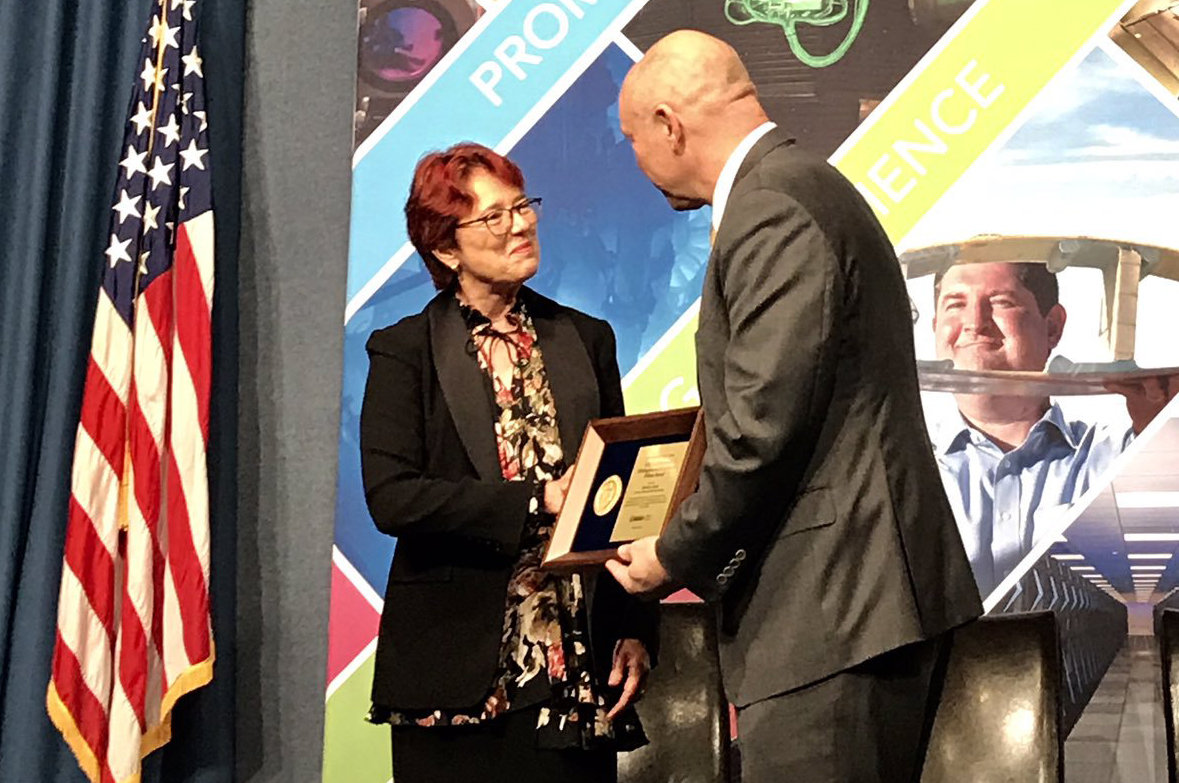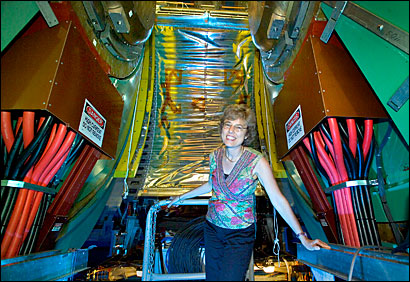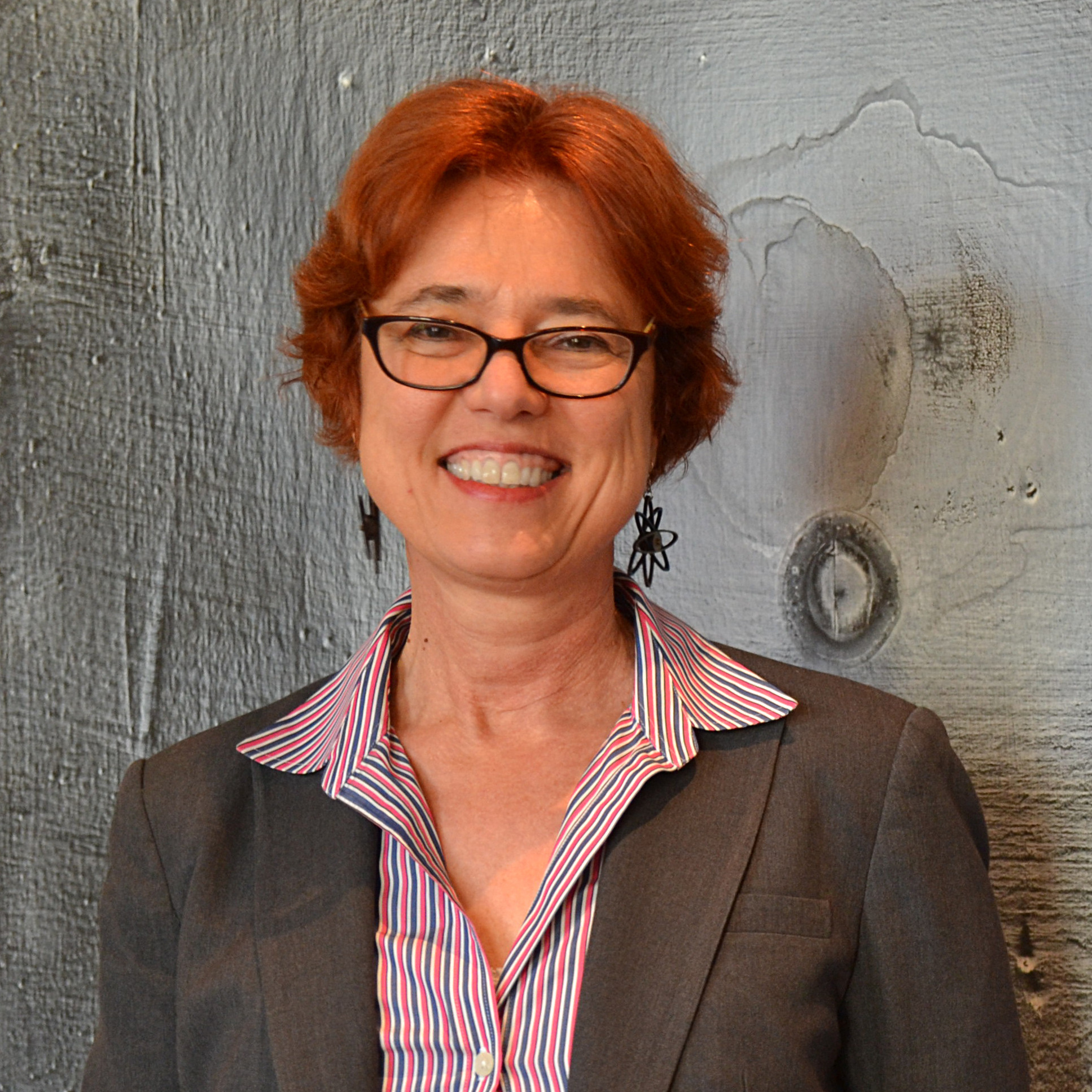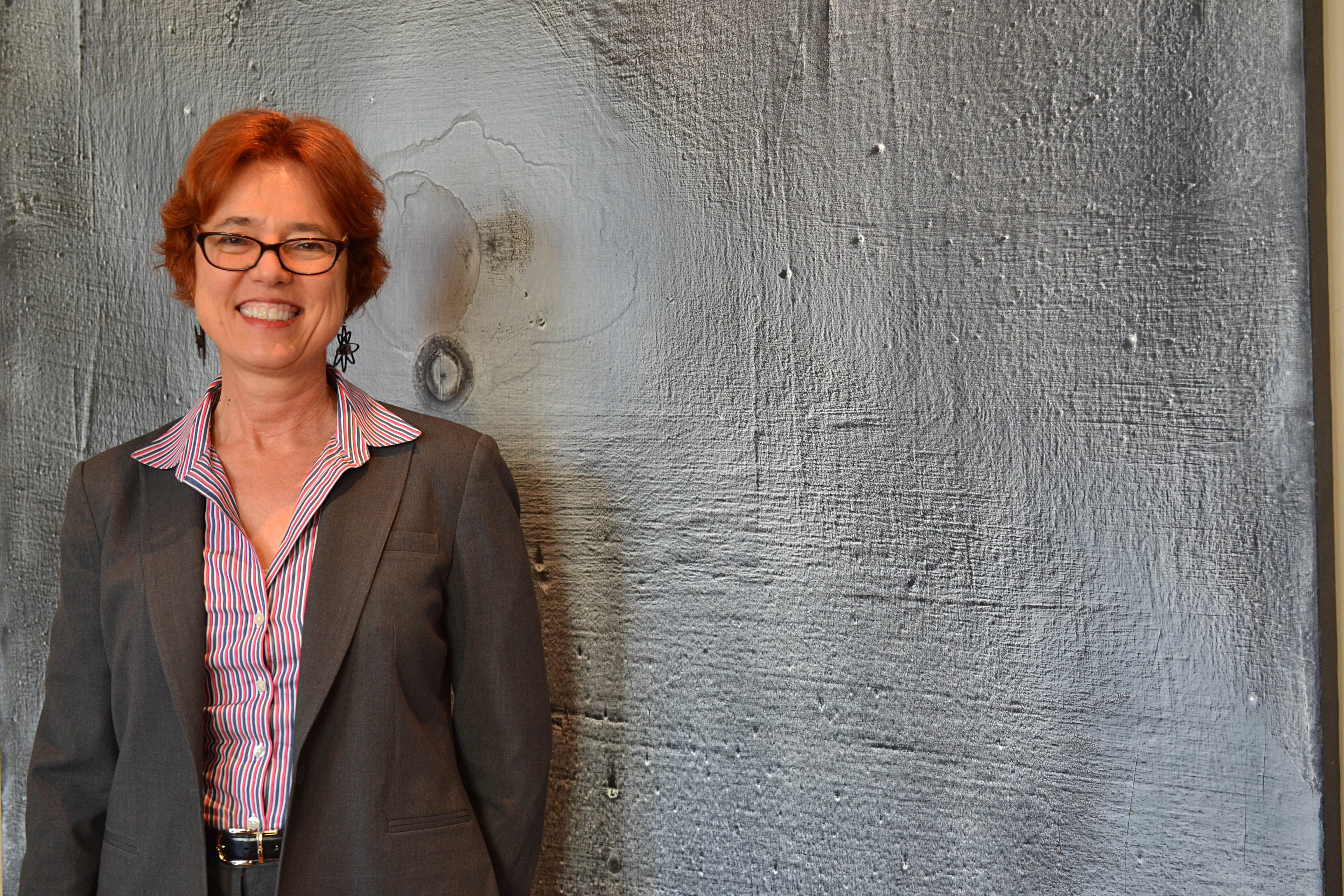Barbara Jacak, director of Lawrence Berkeley National Laboratory’s Nuclear Science Division since 2015, has been named a 2019 Distinguished Scientist Fellow by the U.S. Department of Energy’s Office of Science.
Jacak was among a group of five scientists at DOE national laboratories who are the inaugural recipients of the award. They were honored in an Oct. 16 ceremony in Washington, D.C.
The award recognizes research relevant to DOE Office of Science programs, and in particular, scientific leadership and engagement with the academic and research communities, significant mentoring of early-career scientists or engineers, the quality of publications in high-impact journals, and service to the research community.

Berkeley Lab’s Barbara Jacak receives the Distinguished Scientist Fellow Award from Chris Fall, director of the Department of Energy’s Office of Science, in an Oct. 16 ceremony. (Credit: U.S. DOE)
Berkeley Lab Director Michael Witherell said, “Barbara deserves this award for her exceptional leadership in the intense international campaign to discover and observe the hottest, densest matter in the universe, and in revealing its surprising behavior as a perfect liquid. We are honored to have her in charge of our nuclear science research efforts.”
A leader in the U.S. nuclear physics community, Jacak’s research has focused on the experimental study of the quark-gluon plasma, a so-called subatomic “soup” that contains the building blocks of visible matter and mimics conditions believed to exist in the early universe.
This plasma can be formed in particle collider experiments that liberate particles known as quarks. Jacak and her group study the interaction of particles in hot, dense matter at Brookhaven National Laboratory’s Relativistic Heavy Ion Collider. Her group is also part of the A Large Ion Collider Experiment (ALICE) Collaboration at CERN, the European particle physics laboratory. Jacak has previously served as spokesperson for the PHENIX Collaboration and as a physics professor at the State University of New York at Stony Brook.
Jacak and the other awardees will individually receive $1 million over three years to foster research collaborations. Unlike some awards that support an individual recipient’s research aims, these awards are targeted “to develop, sustain, and promote scientific and academic excellence in Office of Science research through collaborations between institutions of higher education and national laboratories.”

Barbara Jacak with the PHENIX experiment at Brookhaven National Laboratory. (Credit: Brookhaven National Laboratory)
Witherell added, “Barbara has been a major figure in the ALICE and PHENIX collaborations and has been an active leader for the nuclear physics community. Barbara will advance the collaborative research goals of the Fellowship Award.”
James Symons, associate laboratory director of Physical Sciences at Berkeley Lab, said, “I consider Barbara one of the most distinguished experimental nuclear scientists of her generation, worldwide.”
He noted her role in early heavy-ion experiments at CERN in Europe. “She established herself as a leader in the field,” working first in the HELIOS collaboration and then on the NA44 experiment, where she was one of the U.S. leaders, Symons said.
Symons noted that since her arrival at Berkeley Lab, Jacak has developed close ties to UC Berkeley in leading a Berkeley Lab-affiliated research group that participates in ALICE experiments at CERN.
In addition, Jacak has been an active leader and advocate for an Electron Ion Collider (EIC), which is a high priority for the nuclear science community. She spearheaded the formation of a consortium, involving four University of California campuses and three national laboratories, to develop science goals and detail the detector needs for an EIC experiment.
Jacak has also helped to develop the strategy for a new experiment dubbed sPHENIX at Brookhaven Lab that will further detail the microscopic structure of the quark-gluon plasma.
She was a staff member at Los Alamos National Laboratory from 1987 to 1996 and had served as an adjunct associate professor at the University of New Mexico from 1994 to 1996.
She received the American Physical Society’s Bonner Prize in Nuclear Physics for 2019. She is a Fellow of the American Physical Society, the American Association for the Advancement of Science, the American Academy of Arts and Sciences, and the National Academy of Sciences. Jacak completed her undergraduate studies at UC Berkeley and served from 1978 to 1979 as an undergraduate research assistant at Berkeley Lab, where her advisor was Nobel Laureate Glenn T. Seaborg.
Berkeley Lab’s Barbara Jacak, a leader in the nuclear physics community, was among five recipients of the Distinguished Scientist Fellow Award. This video features the awards ceremony, held Oct. 16 in Washington, D.C. (Credit: U.S. Department of Energy Office of Science)
More:
- Preparing for a New Tool to Study the ‘Glue That Binds Us All’ – February 8, 2019
- VIDEO: Barbara Jacak’s Favorite Element: Seaborgium – February 19, 2019
###
Founded in 1931 on the belief that the biggest scientific challenges are best addressed by teams, Lawrence Berkeley National Laboratory and its scientists have been recognized with 13 Nobel Prizes. Today, Berkeley Lab researchers develop sustainable energy and environmental solutions, create useful new materials, advance the frontiers of computing, and probe the mysteries of life, matter, and the universe. Scientists from around the world rely on the Lab’s facilities for their own discovery science. Berkeley Lab is a multiprogram national laboratory, managed by the University of California for the U.S. Department of Energy’s Office of Science.
DOE’s Office of Science is the single largest supporter of basic research in the physical sciences in the United States, and is working to address some of the most pressing challenges of our time. For more information, please visit energy.gov/science.

